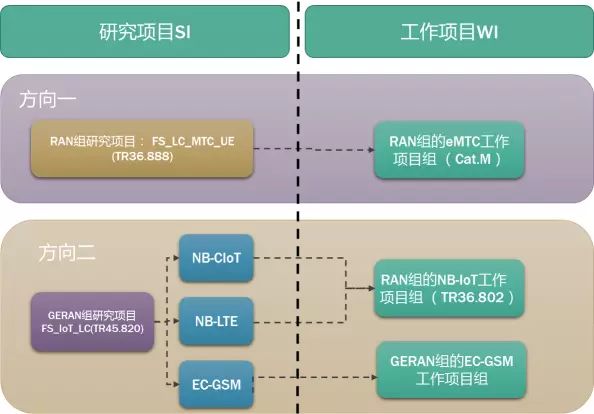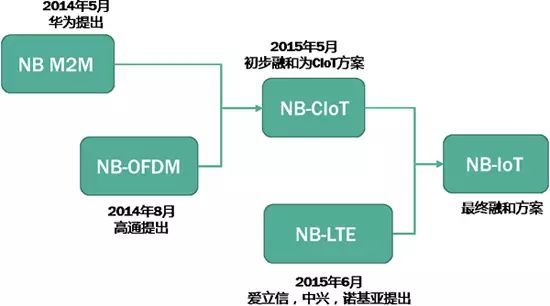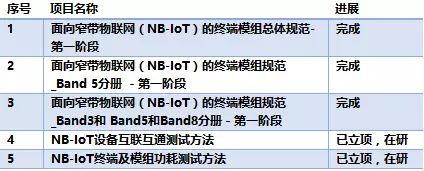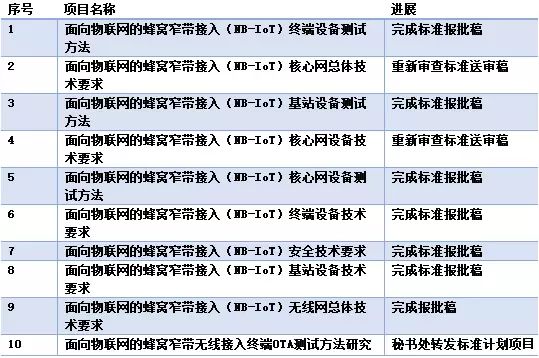1. Introduction
Since the concept of “Smart Earth” was proposed, the idea of the Internet of Things (IoT) has rapidly gained global recognition, becoming one of the core driving forces behind a new round of technological revolution and industrial transformation. The IoT is not just about connecting a massive number of objects; it also involves a high level of integration of various resource elements across multiple vertical industries such as office, transportation, healthcare, and entertainment. According to Gartner’s 2016 report, it is predicted that by 2020, the number of connected devices worldwide will reach 26 billion, with IoT access devices accounting for 16 billion, and the market size will reach $1.9 trillion. Among these, low-traffic, low-power, and low-cost IoT devices will occupy about 90% of the total IoT devices. In 2015, the global communication industry reached a consensus on low-power wide-area (LPWA) IoT scenarios, and 3GPP officially launched related research on NB-IoT.
2. Overview of 3GPP IoT Standardization
Before the introduction of NB-IoT, the industry had already started research on machine-type communications. In the IoT field, LPWAN technology, characterized by low power, wide coverage, low cost, and low data rates, will encompass most IoT business models. Therefore, IoT access technologies aimed at LPWAN scenarios have become a key focus in both cellular and non-cellular IoT communications.
In terms of international standards, 3GPP has been actively promoting the development of related machine-type communication (MTC) technologies, mainly focusing on two directions, as shown in Figure 1.

Figure 1: Relationship Diagram of IoT Related Projects in 3GPP Rel-13
On one hand, during the evolution phase of LTE and LTE-A, 3GPP defined many different terminal types to meet the IoT terminal demands of various scenarios and services. In the Rel-8 version, terminal types Category 1 to 5 were defined based on data rates. In later versions, not only were terminal types such as Category 6 and Category 9 defined to support high bandwidth and high data rates, but a lower-cost terminal type, Category 0, was also defined to support lower power consumption. However, considering that Category 0 technology requires modifications to the existing network, the upgrade costs and terminal benefits are not high, thus its widespread commercial use is unlikely and it is viewed more as a transitional solution. Therefore, 3GPP established the Cat.M working group in 2014. The core standards for Cat.M have now been frozen.
On the other hand, based on the concept of narrowband transmission, 3GPP has discussed the evolution and research of new access technologies. For a long time, IoT business mainly relied on cost-effective GPRS modules to meet the communication needs between IoT devices. However, in recent years, the emergence of new non-cellular IoT technologies such as LoRa and Sigfox has significantly impacted GPRS modules in terms of cost, power consumption, and coverage. Therefore, at the GERAN #62 meeting, 3GPP established a new SI to support lower costs, lower power consumption, and stronger coverage characteristics. NB-IoT was proposed as a new transmission solution based on this approach. In LPWAN scenarios where delay sensitivity and mobility requirements are low, the technical advantages of NB-IoT in terms of battery life and coverage have undoubtedly attracted attention from all parties.
3. NB-IoT Standardization Status
3.1 International Standardization Status
In 2014, 3GPP initiated three main technologies in the initial phase of the GERAN group “FS-IoT_LC” SI project. These are Extended Coverage GSM technology (EC-GSM), NB-CIoT led by Huawei and Qualcomm, and NB-LTE led by Ericsson and ZTE.
CIoT, as a SI topic established at the GERAN #62 meeting, focuses on the technological evolution of cellular networks aimed at IoT terminals. This topic has received support from companies such as Huawei, Nokia, Vodafone, China Mobile, Orange, and Telecom Italy. Its main research objectives include:
· Enhanced coverage (20dB improvement compared to traditional GPRS, with an MCL target of 164dBm) · Support for a large number of low-speed terminal devices · Low-cost devices · Low power consumption (battery life up to 10 years) · Support for uplink and downlink transmission · Minimal network changes
This SI work initiated research on narrowband cellular IoT and ultimately formed a research report TR45.820 on the evolution of GSM-based technologies and new technical solutions. It mainly mentions three technologies: EC-GSM, NB-CIoT led by Huawei and Qualcomm, and NB-LTE led by Ericsson and ZTE. NB-CIoT proposed a new air interface technology, which involves significant changes relative to existing LTE networks. The costs associated with upgrading the network result in improved performance for NB-CIoT, which can fully meet the five performance objectives proposed at the TSG GERAN meeting (enhancing indoor coverage, supporting large-scale device connections, reducing device complexity, reducing power consumption, and reducing delay). On the other hand, NB-LTE technology is positioned similarly to NB-CIoT but tends to be more compatible with existing LTE networks, making deployment simpler. Thus, at the RAN #69 meeting, after intense discussions, all parties reached a consensus to merge the two technical solutions, NB-CIoT and NB-LTE, forming NB-IoT as the LTE-based cellular IoT technology evolution plan, officially initiating the project. Specific capability requirements for NB-IoT were proposed:
· Deep coverage, with NB-IoT providing a 20dB improvement over existing GPRS networks; · Support for single-user uplink and downlink of at least 160bps, expanding the coverage area by 100 times; · Capability to support massive connections, with one NB-IoT sector supporting 50,000 connections; · Lower power consumption, with a 5Wh battery supporting 10 years of terminal use; · More flexible delay, with uplink delays for certain applications relaxed to 10s.
Considering the future GSM shutdown and spectrum resources, the EC-GSM solution is the GSM technology evolution plan for Rel-13 and will only be adopted in certain special scenarios, such as where NB-IoT cannot be deployed.

Figure 2: Evolution Roadmap of NB-IoT Technology
The NB-IoT standards can mainly be divided into Core Part, performance standards, and conformance testing standards. The core part standards specify the detailed content of protocols, including signaling protocols and network access, which are mainly related to development. Performance standards define the performance of various sub-technical fields, related to testing. Conformance testing standards are testing standards for RF, protocols, and RRM. Currently, the core standards for NB-IoT Rel-13 have been frozen.
The conformance testing standards are established by the 3GPP RAN5 working group, and the RAN5 terminal conformance testing sub-working group (NB_IoT-UEConTest) has categorized related test case priorities into two phases, Phase 1 and Phase 2, based on communication with operators and terminal manufacturers. Currently, only a small portion of Phase 1 work remains unfinished, and work on Phase 2 is also ongoing. See Table 1 for details.

Table 1: RAN5 Working Group Progress Chart
In June 2016, at the RAN #72 meeting, a new WI was jointly proposed by Vodafone, Huawei, HI Silicon, Ericsson, and Qualcomm, namely Enhancements of NB-IoT (Rel-14 version). The Rel-14 version of NB-IoT is an enhancement of the Rel-13 version while maintaining the existing low cost, low complexity, capacity, and coverage capabilities of NB-IoT.
Enhancements of the Rel-14 version of NB-IoT include:
· Positioning: Improvement of the positioning limitation in Rel-13 version · Mobility enhancement: Improvement of weak mobility limitations in Rel-13 version · Multicast: For UE (embedded chip ROM) software upgrades, message broadcasting, etc. · New power levels: Using lower power levels (14dBm) under relaxed MCL conditions
3.2 Domestic Standardization Status
The domestic IoT market has immense potential, but the current industry standards lack unification, leading to severe fragmentation in the IoT market, necessitating prompt research and standardization of IoT technologies. On one hand, this will meet the development requirements of the IoT market and assist operators in transformation. On the other hand, it will further promote the accelerated development of the IoT industry. Currently, the main organizations involved in the standardization of NB-IoT and IoT industry in China are the China Communications Standards Association (CCSA) and the Telecommunications Terminal Industry Association (TAF). The CCSA is working within the existing framework of 3GPP to develop technical methods and testing methods for cellular narrowband access aimed at IoT. The TAF, on the other hand, relies on the industry and is based on the integration of communication and vertical industries to improve the relevant standard system and content.
3.2.1 Domestic Industry Progress
The Telecommunications Terminal Industry Association began research and standardization work related to cellular narrowband IoT in 2017. Considering the numerous IoT module companies in the industry chain, the varied forms of IoT modules, and the different instruction sets adopted by various manufacturers, TAF has completed the first association standard for IoT modules in China. The current specific progress of the TAF association is as follows:

Table 2: TAF Cellular Narrowband Access Standard Progress
In the relevant standards and specifications for TAF cellular narrowband IoT modules, comprehensive reference and integration of opinions from various chip, module, terminal, industry application providers, and operators have been made to define NB-IoT modules, completing the first phase of NB-IoT module standards. With the development of technology, more targeted second-phase standards will be formulated later. The specifications for narrowband IoT (NB-IoT) module series mainly involve the following aspects:
– Dimensions and packaging – Operating frequency bands – Operating environment (temperature and voltage) – Interfaces – Transmit power – Power consumption – Pin functions – AT commands, etc.
3.2.2 CCSA Standardization Progress
In terms of industry standards, CCSA began related work in 2016. Currently, 7 draft approval documents and 2 review drafts have been completed, as follows.

Table 3: CCSA Cellular Narrowband Access Standard Progress
In the relevant standards for CCSA cellular narrowband access, the standard architecture for terminal testing methods largely follows the original LTE mobile terminal standard architecture. Traditional RF, protocol, and RRM aspects remain consistent with 3GPP, while business functionality has been simplified, and new considerations have been made for interoperability based on the operational characteristics of NB-IoT terminals.
4. NB-IoT Terminal Testing Validation and Future Development
4.1 Current Status of GCF Terminal Testing Validation
GCF has initiated validation and certification work for NB-IoT. The RF, RRM, and protocol working groups for NB-IoT are WI-259, WI-258, and WI-257 respectively. Similar to 3GPP, GCF has also divided the related testing validation work into two phases, Priority 1 and Priority 2. Among them, the RF-related test cases require validation of 30 items, with 10 items in P1 and 20 items in P2. There are 12 RRM test cases, with 6 in Phase 1 and 6 in Phase 2. The protocol test cases require validation of 73 items, with 17 in P1 and 56 in P2. Currently, the validation work on the instrument platform is progressing steadily, with most work focused on protocol and RF test case validation. No manufacturers have submitted test case validation for the RRM part yet. As of early April 2017, according to GCF’s official validation statistics, the validation status of various instrument manufacturers is as follows:

Table 4: GCF Testing Validation Progress
4.2 Development Trends in NB-IoT Industry Testing Validation
As an important technology of LPWAN, NB-IoT possesses significant technical and application advantages. Currently, global operators have recognized the enormous potential of the IoT market and have begun actively conducting business demonstrations and testing. Currently, the domestic NB-IoT industry mainly focuses on vertical industries such as metering, parking, asset tracking, transportation, and agriculture. For traditional communication functions (RF, protocol parts), chip and terminal companies can develop and test according to the existing LTE standards and testing architecture, which is a relatively complete solution architecture system. However, in vertical industries, the requirements for power consumption, services, working environments, etc., vary significantly, and the testing validation system and solutions for vertical industries are still not sufficiently developed.
TAF has initiated targeted research on the industry’s concerns regarding “power consumption” and “interoperability,” investigating testing dimensions and methods. Utilizing the TAF and its members’ ecosystem, surveys are conducted in vertical industries to collect business logic and application scenarios. In TAF working group meetings, the strengths of the industry chain from operators, chip-module-terminals are fully leveraged to thoroughly study the application scenarios and business logic required for “cloud”; thus evolving traditional communication domain testing for power consumption and compatibility testing towards collaboration between “cloud,” “pipe,” and “end,” creating a testing solution system that integrates communication and vertical industries.
In terms of testing solutions, different vertical industries have varying requirements for wireless access environments and physical working conditions, and the business logic and characteristics show a clear divergence. A single communication testing validation solution has diminished relevance for vertical industries. At the same time, IoT technology brings new integration between vertical industries and the communication industry, leading to new demands for testing IoT communication terminals/modules based on business needs in vertical industries. Creating a generic testing validation platform tailored to different vertical industries may become one of the possible development directions for subsequent testing and validation.
5. Conclusion
This article begins by introducing the origins and current status of NB-IoT within the international standardization organizations from the perspective of the IoT standard system. Furthermore, it combines the characteristics of domestic industries to introduce the standardization work of domestic standardization organizations in NB-IoT. Additionally, it briefly outlines the current progress of NB-IoT terminal testing validation and the work of related certification organizations. Finally, it provides some suggestions regarding the development trends of NB-IoT related testing validation.
Authors: Su Geng, Liu Di, Guo Gan, China Academy of Information and Communications Technology, TIER Terminal Laboratory
References:
[1] RP-151621. New Work Item: Narrowband IoT (NB-IoT), Qualcomm Incorporated[R]. 2015[2] 3GPP TR 23.720 V13. Study on architecture enhancement for Cellular Internet of Things.[3] 3GPP TR 45.820 V13.1.0 Cellular system support for ultra-low complexity and low throughput Internet of Things (CIoT). 2015.[4] 3GPP TR 36.888 V12.0.0. Study on provision of low-cost Machine-Type-Communications (MTC) User Equipment (UE) based on LTE. 2013[5] Wang E, Lin X Q, Adhikary A, A Primer on 3GPP Narrowband Internet of Things (NB-IoT),2016[6] 3rd Generation Partnership Project. Technical Specification Group GSM/EDGE Radio Access Network; Cellular system support for ultra-low complexity and low throughput Internet of Things (CIoT)(Release 13).[7] 3GPP TR 36.802. Narrowband Internet of Things (NB-IoT); Technical Report for BS and UE radio transmission and reception (Release 13). 2016[8] Ksentini A, Hadjadj-Aoul Y, Taleb T. Cellular-based Machine-to-Machine (M2M): Overload Control, IEEE Network, 2012,26(6):54-60[9] Dai Bo, Yuan Ge Fei, Yu Yuan Fang, Narrowband IoT (NB-IoT) Standards and Key Technologies, People’s Posts and Telecommunications Press, 2016[10] Dai Guohua, Yu Junhua, Research on the Generation, Development, Characteristics, and Services of NB-IoT, Mobile Communications, 2016, 40(7):31-36[11] Wang Xiaozhou, Lin Lin, Xiao Ziyu, Research on the Standardization and Development Trends of NB-IoT Technology, Modern Telecommunications, 2016, 46(6):5-12
Related Articles:
Basic Knowledge of RF Coaxial Adapters: Comprehensive Introduction from Structure, Matching, and Connection
[Basics] How to Deeply Learn Open Source Software Radio (GNU Radio)
Exclusive Release | Technical Experts Explain the Basics of RF Switches
Filter Basics: Anti-Aliasing
The Best Antenna Basics! Super Practical for Anytime Reference
Microwave RF Industry Professionals | Gathering Here
[WeChat Technical Exchange Group for 10 Major Subfields]
The Microwave RF Network has established technical exchange groups for subfields such as RF, antennas, radar, millimeter-wave, mobile RF, RFIC, amplifiers, SDR, providing a platform for mutual communication to promote technological advancement.

Long press to recognize the QR code above to add the group owner as a friend, indicating: unit + technical direction, inviting you to join the corresponding technical group!